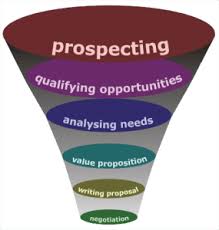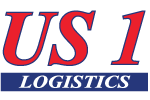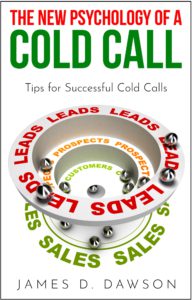Prospecting 101 for Transportation Agents
If you are going to be a successful freight agent you had better know how to prospect. If you are a freight broker agent or a capacity agent you still need to know how to freight prospect. It is one of if not the most important task you will do everyday.
Why is prospecting so important.
- It is the starting point of successful sales. The ability to find new customers determines your level of success.
- You must have sufficient prospects in your pipeline to meet your long term sales goals.
Before you begin prospecting, you should try to find out some basic information about the prospect. If they were a previous customer see what lanes we were moving, what type of freight they have, what the rate levels were, did we have any problems with the account. This information can be obtained from our computer system, credit department, Account Managers, Salespeople, and our Operations Manager.
were a previous customer see what lanes we were moving, what type of freight they have, what the rate levels were, did we have any problems with the account. This information can be obtained from our computer system, credit department, Account Managers, Salespeople, and our Operations Manager.
If we have never done business with them, check their website. Find out what they make or what raw materials they have coming in. See where their plants or distribution centers are located. If all else fails call them and ask where their closest plant and/or distribution center is. The more information you have before you call the more comfortable you will be and the more likely you are to be successful. Do not spend too much time searching their website or looking for information, maybe 2 to 3 minutes at the most.
The fear of prospecting is the number one reason salespeople fail.
How do you overcome your fear of prospecting?
- Be prepared to answer most questions.
- Understand that rejection is not personal and cannot be avoided.
- Remember that every failed sales call is a learning experience. Each time you are improving your technique and getting better.
- Give yourself a reward when you close a new customer.
- Get comfortable with public speaking.
- Never rush. Be concise and a good listener, but never rush.
- Visualize success.
- Get excited when you are successful.
What should a sales presentation include?
- Do not use the word broker. Use logistics or 3PL instead. The word broker has a negative connotation for some customers.
- Would be broken down into three basic parts.
- Establish a rapport with the contact and gain their attention.
- Identify current problem areas.
- Present a solution.
- Use opened and qualifying questions. These questions can be used to:
- Identify and articulate specific needs.
- Demand attention by highlighting problems you can solve.
- Illustrate how our service can provide solutions.
- Gain commitment.
- Your presentation should center around the questions in the back of every prospects mind:
- Why should I listen to you?
- What are you selling?
- What is in it for me?
- How do I get it?
- You should take into account the personality of the person you are speaking with:
- Are they sensitive to the effect the decision will have on others. They will probably need time to make a decision and have reassurance others will approve.
- Are they achievement oriented looking to make a name for themselves. These people will require specifics on how your product will help them achieve greater success.
- Are they concerned with doing the right thing? These people will require specific, highly detailed, thorough and prepared information to work methodically through.
- Are they just focused on the bottom line results. They will need to see how this helps them do their jobs better. You need to close the sale quickly with them before they lose interest.
- Successful transactions with similar customers can help close a deal. Be careful not to divulge proprietary information concerning other customers.
- Frequently invite the prospect to express:
- What they are thinking.
- How they feel.
- Their opinion.
- Their previous experiences.
- What they are thinking.
- Make sure your presentation is an accurate reflection of your personality.
- The presentation should have a pace and flow that matches the prospects personality.
- Demonstrate your ability to use specific knowledge of our service to ensure:
- That you have a thorough knowledge of our services.
- You have an in depth appreciation of the client’s needs.
- That you are prepared to serve them.
- That your personality matches our service.
- That you have done this before.
- That you say what you mean and mean what you say.
- Your presentation should be built around the idea of:
- Showing our how our service works.
- Telling the prospect how it benefits them.
- Allows the prospect to ask questions.
- You should move from general concepts to specifics.
- Moves toward a decision or a set time for follow up. Try to get the prospect to specify a particular condition that obtaining their freight hinges upon if necessary to close the deal.
Objections are a normal part of the prospecting process and serve three key roles.
- They indicate interest.
- The show where the prospect is unclear about the benefits.
- They indicated the prospect is considering the service.
How to best handle objections:
- Differentiate between a condition and an objection. A condition could be a genuine reason for not using
 our service. An objection could possibly be answered with additional information.
our service. An objection could possibly be answered with additional information. - The best way to answer an objection is before it comes up. Develop good solid answers for the most common objections you might face.
- Treat objections as requests for more information. You could even complement the customer raising the matter, restate it back to them to make sure you grasp their full meaning and intelligently and thoughtfully discuss the matter in greater detail.
- Never take an objection personally.
Most common objections:
- We do not use brokers.

- We require an asset based company.
- I have had a bad experience with a company in the past.
- When I have used you in the past you were not rate competitive.
- You are not rate competitive now.
- Find an appropriate way to demonstrate the value delivered by our company.
- Ask by how much our price is too high. Focus on finding a way to show why it is worth more. Perhaps you should consider adjusting short term pricing or pricing a couple of lanes to gain the freight. This would give us the opportunity to prove our service ability.
- Tell as success story about a company in a similar position and what they found. Be careful not to divulge customer proprietary information.
- Remind the customer that sometimes you get what you pay for. Be polite, remember long-term relationships are key.
- Show some concrete ways the value derived will offset the rate.
When you receive an objection, ask short simple questions to keep them talking:
- Where do you normally ship?
- How long have you been in business?
- When is your peak season?
- Do you have any unfilled lanes?
- What is your hardest lane to cover?
- Are you satisfied with the service of your current carriers?
- Are you having any recurring problems now?
- Do you have any inbound freight?
Things you should always avoid:
- Arguing with the customer.
- Expressing your own personal opinions.
- Knocking the competition. Remember sell positives, not negatives.
- Do not sell services we cannot provide. Always check with Operations, sometimes our the services we can provide change and sometimes we can develop new services if there is a need.
- Making promises you are unable to deliver upon. Mean what you say and say what you mean.
How to close.
- The invitational close – a simple invitation to the customer to allow us to service their account.
- The plan of action close – if the customer is not ready to commit, make sure you set a clear follow up plan with them where you have identified the next steps.
- The alternate close – have the customer make a decision they would only have to make if we were actually doing business with them. This could include:
- Getting the credit information.
- Asking who their load coordinators were.
- Asking for a copy of their fuel surcharge agreement.
- The think it over close – ask them what you would have to do to get them to make a decision today. Once you have that you either have information to continue working the close or a reason to call them back after you ‘see what you can do’.
Take lots of notes when speaking to a prospect. They a VERY valuable later.
The world belongs to the askers. Because of their fear of failure and rejection, most people are reluctant to ask for the things they want or need.
Please feel free to let us know what you think of our article. If there are things you would like us to write about, let us know. We will try to answer any questions you might have. We look forward to hearing from you.
If you are searching for trucking companies looking agents then we can help. We speak to a number of trucking companies and their agents concerning trucking companies agent programs.



Recent Comments